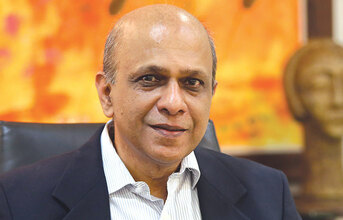
In a service-led economy like India, the Central Government's Make in India was a prescient move to catalyse the country's manufacturing with a holistic approach. The rewiring of the world's supply chains, after disruptions like the pandemic, ongoing wars, and geopolitical tensions, has been a boon for India to assert its manufacturing resilience on the competitive global stage. Make in India, supporting both domestic manufacturing and services, will arm it with the right credentials, especially as a prominent leader of the Global South.
As we mark the 10th anniversary of the transformative Make in India initiative, Ministries/Departments, the Central Government, and State Governments are working to promote innovation, overhaul the industrial infrastructure, invite investments, generate employment, and boost economic growth by galvanising indigenous manufacturing.
The flagship program has sparked an evolutionary shift towards greater ease of business with supporting frameworks such as the National Single Window System (soft- launched), making it easier to secure requisite government approvals. The Project Development Cells fast-track investments, and the Public Procurement (Preference to Make in India) Order of 2017 grants preference in public procurement to local industries.
There has been a surge in investment opportunities driven by targeted schemes like the Production Linked Incentive Scheme. With an outlay of Rs 1.97 lakh crore ($24 billion), 24 sub-sectors are being leveraged based on their strengths, competitive advantage, and scope for import reduction, export boost, and employment generation.
One of the focus areas of Make in India has been India's essential manufacturing sectors, such as automotive and aerospace, in addition to honing local talent, both of which align seamlessly with Godrej & Boyce's vision. The 126-year-old conglomerate was a pioneer in ‘making in India' before it was formalised as a definitive program. The momentum generated by Make in India has further enabled innovation across our businesses, nurtured industrial acumen, and helped us contribute to the nation's cutting-edge technical growth.
Make in India's focus on skill development and local employment has reaped encouraging results. According to the latest Annual Periodic Labour Force Survey, employment in the manufacturing sector increased to 11.4 per cent in 2022-23 compared to 10.9 per cent in 2020-21. With a sizable blue-collar workforce, Godrej & Boyce, too, has been investing in upskilling for local skill development.
Underscoring the need to source locally, as championed by Make in India, we are developing a formidable network of domestic suppliers to help us reduce imports. Godrej & Boyce's marquee supplier program, called ‘Beyond Sourcing,' has enabled us to strengthen our supply chain by onboarding MSMEs, key to India's manufacturing and exports narrative, constituting 25 per cent of our suppliers. We plan to take their share to 50 per cent of our suppliers by 2030. Local sourcing is in sync with our drive to make manufacturing more sustainable as well.
The collaborative spirit fostered by Make in India has attracted global players and amplified India's technological prowess. We see more manufacturers embrace technologies like automation, artificial intelligence, and IoT to enhance efficiency, lower costs, and increase competitiveness. Technological collaborations, both domestic and foreign, are bound to establish India as an effective partner in global value chains. The world over, manufacturers are reassessing their impact on the environment, as investors and consumers alike mount pressure on companies to turn environmentally friendly. Sustainability goals, spanning green manufacturing, local sourcing, and a circular economy, are prioritised as much as financial targets. To reach India's goal of being carbon net-zero by 2070, Make in India's hefty PLI purse could incorporate additional incentives for going green as we move forward. With FDI equity inflow in the manufacturing sector rising by 57 per cent from 2014-22 over the previous eight years (2006-14), Make in India's decade-long progress has much to celebrate and a lot more to achieve. As tenacious and dedicated as India's manufacturing, the program will surely continue to evolve and take us closer to global excellence.


























